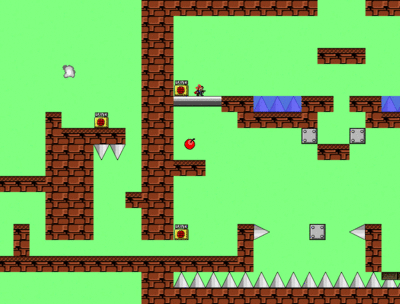Game Maker Blood Splatter Particles Of Solid

Game Maker Blood Splatter Particles Of Solid 6,2/10 292votes Game Maker Blood Splatter Particles Of Truth. The few other powerful 3. D solid modeling systems available are complicated to learn and use.
This is my game maker particles section. It has some particle examples i've made with a program called Game Maker. All credit for Game Maker goes to it's creator. If there is someone who needs to be given credit, or if there is anything that would be cause for concern, tell me and I will adjust or remove it. Jan 24, 2015 - I have been using UDK, UE4, Unity (since 3.5), GameMaker Studio. It has strong focus on so called 'shadow play' which limits ability to see a. For blood splatters I decided to create bumped-specular particles with.
Game Maker Blood Splatter Particles Definition. Mother’s Day is Sunday. Does anyone need to put that on their calendar?
If you have a mom in your life and you haven. • • • • Community ▼ • • • • • • • • • • • • Resources ▼ • • • • • • • • • Other ▼ • • • • • • is software designed to make developing games easy and fun. It features a unique 'Drag-and-Drop' system which allows non-programmers to make simple games. Additionally, experienced coders can take advantage of its built in scripting language, 'GML' to design and create fully-featured, professional grade games. Content that does not follow the is subject to deletion, so please become familiar with them. So, I´m going to implement blood effects in my game, but what kind of implementation should I use to get the best performance?
This is want I want do to: each time a lifeform is atacked, a splatter with a total of 8-12 sprites will be created, and when they stop moving, I want then to stay in the ground. So if I use objects, I just would have to draw the blood sprites to the a surface when the blood object speed equals to 0, then I destroy the object and the sprites stays in the surface. But since I gonna be creating 8-12 objecs for that. I would taking a good performance hit there, so I wonder if there is a way to do this with particles, or any other method thats more efficient? The particle system doesn't allow collision with objects, however, you can still combine the particle system with a randomized object spawner that spawns blood objects that stay. Buku armageddon peperangan akhir zaman pdf to word 2016. This way you get more blood effect for less processing power, and still get the sticking to the ground effect.
Create a controller object that spawns these blood objects, and in it you have a counter that counts up whenever you spawn something, and it goes down whenever a blood object despawns. Then have your oldest objects get destroyed when you try to spawn new ones if you're at the blood particle limit. This way, you can limit the frame rate hit you will get. Alright, so what I meant is you create different blood splatter animations (ex: anim_blood_big, anim_blood_small, etc.), create objects with them (ex: obj_blood_big) and the sort. But while writing this, I've thought of a better way. When the player or enemy gets hit, you must run instance_create(x,y,obj_blood) Then in the create event, create an array like so: blood[0] = anim_blood_big; //repeat it here for all of them, adding to the number Add a randomize();, and finally, sprite_index = blood[random_range(0,array_length_1d(blood-1))]; In your step event you want to make sure your animation doesn't loop.
Then it should work. Edit: the animations are just sprites that have multiple frames. Edit 2: I should sleep before posting codes. Due to the top-down perspective of my game, I use objects and surfaces to do my splatter effects. The floor of the room has one big surface attached to it and each wall also has their own surface. The splatter object has z, z_speed and z_gravity variables to simulate parabolic motion. If a splatter instance reaches z = 0, then the splatter is drawn on the floor surface.
If the splatter collides with the south side of a wall and its z >0, then it get drawn on that wall's surface, otherwise nothing is drawn. In all cases, the splatter instance is destroyed. To save memory, my surfaces are only half the sizes of the floor and walls, which are scaled up when drawn.
The drop in visual quality is barely noticeable. Post navigation.
Skeletal characteristics of the remains: 1. There is one set of teeth with the skull. The teeth indicate poor dental care and mineral deficiencies. Several of the rib bones are broken inward, toward the chest/abdominal cavity. The pubic arch is wide and the distance between the ischium bones is larger than average. Four arm bones and two leg bones are missing.
No indications of damage on the remaining and arm and leg bones. The height of the individual based on the femur is estimated to be 155 cm.